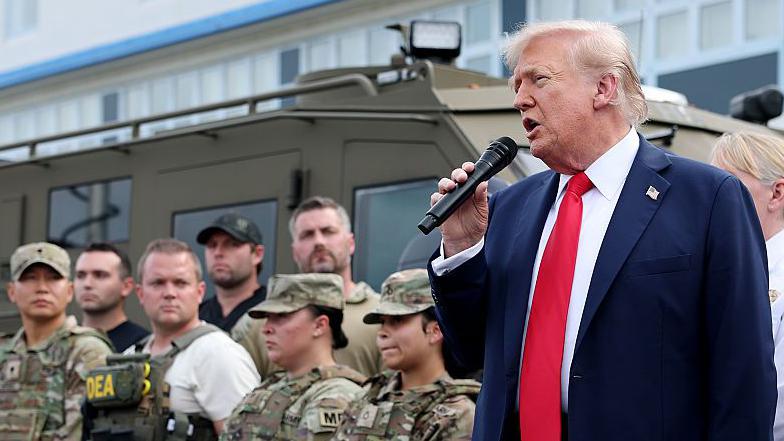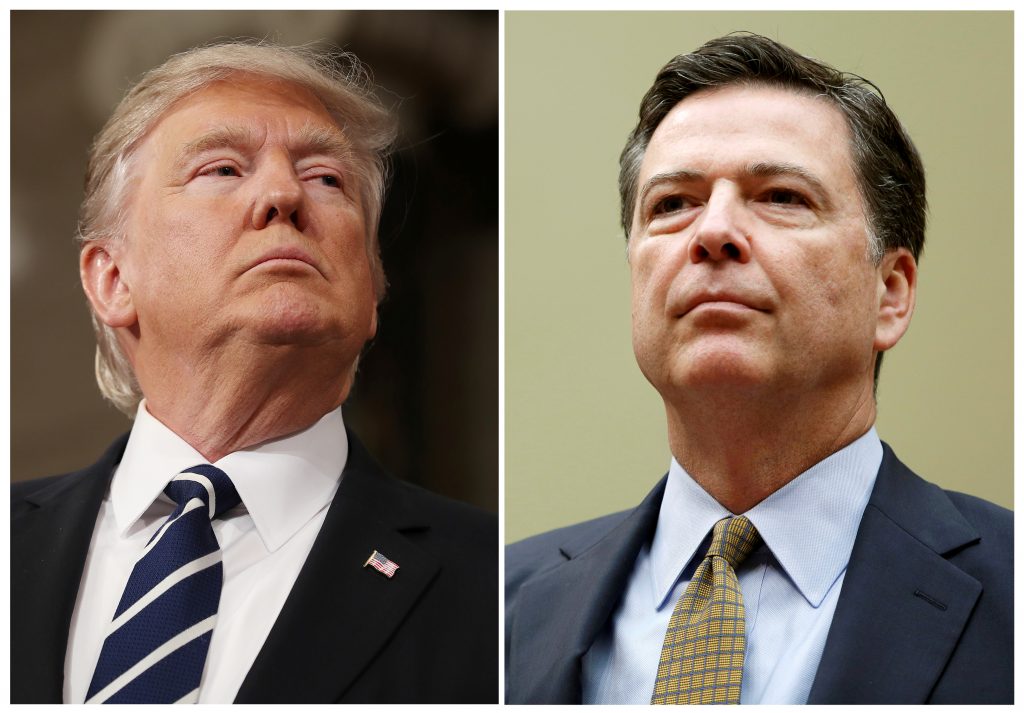Report on Proposed Domestic Military Deployment and Implications for Sustainable Development Goals
1.0 Introduction
A joint address on September 30, 2025, by President Donald Trump and Secretary of Defense Pete Hegseth outlined proposals to deploy United States combat forces in domestic law enforcement roles. This report analyzes these proposals, highlighting their direct conflict with the 2030 Agenda for Sustainable Development, particularly Sustainable Development Goal 16 (Peace, Justice and Strong Institutions) and Sustainable Development Goal 11 (Sustainable Cities and Communities). The proposed actions risk severe human rights violations and undermine the principles of accountable governance and public safety.
2.0 Analysis of Proposed Policies
The administration’s stated intentions represent a significant departure from established legal and operational norms. Key elements of the proposal include:
- The domestic use of the U.S. military to address a perceived “war from within.”
- The designation of U.S. cities as “training grounds” for armed forces.
- An institutional shift towards “maximum lethality” and the weakening of rules of engagement.
- The restriction of internal dissent and the elimination of anonymous complaint channels, which threatens whistleblower protections under U.S. law (10 U.S.C. § 1034).
These policies are being advanced despite U.S. laws, such as the Posse Comitatus Act, which expressly prohibit the use of the military for domestic law enforcement unless authorized by Congress.
3.0 Conflict with SDG 16: Peace, Justice and Strong Institutions
The administration’s proposals fundamentally contradict the objectives of SDG 16, which aims to promote peaceful and inclusive societies, provide access to justice for all, and build effective, accountable, and inclusive institutions at all levels.
- Erosion of the Rule of Law (Target 16.3): The circumvention of the Posse Comitatus Act undermines the national legal framework, which is a cornerstone of SDG 16. Promoting the rule of law requires adherence to established legal boundaries between military and civilian functions.
- Increased Risk of Violence (Target 16.1): Military forces are trained for combat, not for rights-respecting law enforcement. International standards emphasize restraint and the limited use of force in policing. Deploying combat-trained troops in civilian settings inherently increases the risk of lethal violence and human rights violations, directly opposing the goal of reducing all forms of violence.
- Weakening of Accountable Institutions (Target 16.6): The plan to lower standards for misconduct and silence whistleblowers is a direct assault on the development of effective, accountable, and transparent institutions. Such measures create a permissive environment for abuse and prevent redress for victims, including service members facing harassment.
4.0 Threats to SDG 11: Sustainable Cities and Communities
SDG 11 focuses on making cities and human settlements inclusive, safe, resilient, and sustainable. The militarization of urban areas poses a direct threat to this goal.
- Undermining Public Safety and Inclusivity (Target 11.7): The presence of military forces in cities does not foster safety but instead creates an environment of fear and intimidation. It threatens access to safe and inclusive public spaces, which are essential for community well-being and social cohesion.
- Disruption of Local Governance: Using federal troops for law enforcement can override local and state authorities, disrupting community-based policing and governance structures that are critical for sustainable urban development.
5.0 International Precedents and Wider SDG Impacts
The use of military forces for domestic policing has a documented history of human rights abuses globally, serving as a cautionary indicator of the potential outcomes. These actions also impact SDG 5 (Gender Equality) and SDG 10 (Reduced Inequalities), as military deployments often disproportionately affect marginalized communities and the suppression of internal complaints can silence victims of harassment.
Historical examples of rights violations linked to domestic military deployment include:
- United States (1970): National Guard troops killed four unarmed students during a protest at Kent State University.
- Zimbabwe (2019): Military forces used excessive and lethal force to suppress nationwide protests.
- Mexico: The sustained use of the military in combating criminal activity has led to widespread extrajudicial executions, enforced disappearances, and torture.
- Brazil: Military forces deployed for law enforcement have committed killings and torture with impunity.
- Myanmar, Egypt, and Thailand: Military forces have conducted lethal crackdowns on public protests.
6.0 Conclusion and Recommendations
The proposal to use the U.S. military for domestic law enforcement is inconsistent with U.S. law, international human rights standards, and the nation’s commitment to the Sustainable Development Goals. It is a formula for rights violations that would weaken democratic institutions and endanger public safety.
To align with the principles of the 2030 Agenda, the following actions are recommended:
- State and local officials, including governors, should reaffirm their commitment to SDG 16 by opposing any efforts to use military forces as a domestic police force.
- Congressional leaders must uphold the rule of law (Target 16.3) by reinforcing the legal prohibitions outlined in the Posse Comitatus Act.
- Institutional accountability (Target 16.6) must be strengthened by protecting whistleblower channels and ensuring the U.S. military operates under the highest standards of professionalism and human rights compliance.
Analysis of Sustainable Development Goals in the Article
1. Which SDGs are addressed or connected to the issues highlighted in the article?
The primary Sustainable Development Goal (SDG) addressed in the article is SDG 16: Peace, Justice and Strong Institutions. The article’s core focus is on threats to the rule of law, human rights, and the accountability of state institutions, which are central themes of SDG 16.
- Peace and Justice: The article discusses the potential for “widespread human rights violations,” the use of “lethal force,” and the risk of turning US cities into “training grounds” for the military. It warns of a “recipe for disaster” that undermines peace and security within the country.
- Strong Institutions: The text highlights the weakening of institutional integrity and accountability. It points to plans to “lower standards for misconduct,” restrict internal dissent, and “eliminate anonymous complaints,” which directly attack the principles of effective, accountable, and transparent institutions. The article also emphasizes the violation of US laws like the “Posse Comitatus Act,” showing a disregard for established legal and institutional frameworks.
2. What specific targets under those SDGs can be identified based on the article’s content?
Several specific targets under SDG 16 are directly relevant to the issues described in the article:
- Target 16.1: Significantly reduce all forms of violence and related death rates everywhere.
- The article raises alarms about plans to pursue “maximum lethality” and the unlawful use of “lethal force.” It references historical and international examples of military forces killing civilians during domestic operations, such as the Kent State shootings and crackdowns in Zimbabwe, Mexico, and Brazil, directly connecting the proposed actions to an increased risk of violence and death.
- Target 16.3: Promote the rule of law at the national and international levels and ensure equal access to justice for all.
- The article explicitly states that the proposed deployment of combat forces would be in “brazen violation of US law,” specifically citing the “Posse Comitatus Act.” It also mentions that plans to eliminate anonymous complaints would “undermine service members’ ability to seek redress,” thereby impeding access to justice.
- Target 16.6: Develop effective, accountable and transparent institutions at all levels.
- The administration’s stated intent to “lower standards for misconduct,” weaken “rules of engagement,” and “eliminate anonymous complaints” is a direct assault on institutional accountability and transparency. The article warns that such rhetoric “risks creating a permissive environment for human rights violations.”
- Target 16.10: Ensure public access to information and protect fundamental freedoms, in accordance with national legislation and international agreements.
- The article notes that the White House issued a memorandum to “investigate civil society groups” and that the Secretary of Defense plans to “restrict internal dissent” and “silence whistleblowers.” These actions represent a direct threat to fundamental freedoms of association, expression, and the public’s right to information.
3. Are there any indicators mentioned or implied in the article that can be used to measure progress towards the identified targets?
Yes, the article mentions or implies several indicators that can be used to measure progress (or regression) towards the identified targets:
- For Target 16.1: An implied indicator is the number of civilian deaths and injuries resulting from the domestic deployment of military forces. The article’s references to “lethal force,” “extrajudicial killings,” and specific death tolls in past events (e.g., “killing four” at Kent State) point to this as a key metric of violence.
- For Target 16.3: A clear indicator is the number of documented violations of national laws governing the use of the military for domestic law enforcement (e.g., the Posse Comitatus Act). Another implied indicator is the number of formal channels available for service members to seek redress and the volume of cases filed or blocked, as the plan to “eliminate anonymous complaints” directly impacts this.
- For Target 16.6: An indicator is the existence and accessibility of independent and anonymous complaint mechanisms within the military. The plan to “eliminate anonymous complaints” provides a direct, measurable action against institutional accountability. Changes to “rules of engagement” and “standards for misconduct” could also be tracked as indicators.
- For Target 16.10: A measurable indicator is the number of official investigations, legal actions, or restrictions placed on civil society groups and whistleblowers. The article’s mention of a specific “memorandum instructing the government to investigate civil society groups” and a “plan to eliminate anonymous complaints” provides a basis for this metric.
4. Table of SDGs, Targets, and Indicators
| SDGs | Targets | Indicators |
|---|---|---|
| SDG 16: Peace, Justice and Strong Institutions | 16.1: Significantly reduce all forms of violence and related death rates everywhere. | Number of civilian deaths and injuries resulting from the use of “lethal force” by military personnel in domestic law enforcement roles. |
| SDG 16: Peace, Justice and Strong Institutions | 16.3: Promote the rule of law at the national and international levels and ensure equal access to justice for all. | Number of documented violations of the “Posse Comitatus Act” or other laws restricting domestic military deployment; Number of service members denied the ability to “seek redress.” |
| SDG 16: Peace, Justice and Strong Institutions | 16.6: Develop effective, accountable and transparent institutions at all levels. | Existence and accessibility of anonymous complaint mechanisms for military personnel; Changes to official “standards for misconduct” and “rules of engagement.” |
| SDG 16: Peace, Justice and Strong Institutions | 16.10: Ensure public access to information and protect fundamental freedoms. | Number of government investigations targeting “civil society groups”; Number of actions taken to “silence whistleblowers” or “restrict internal dissent.” |
Source: miragenews.com






